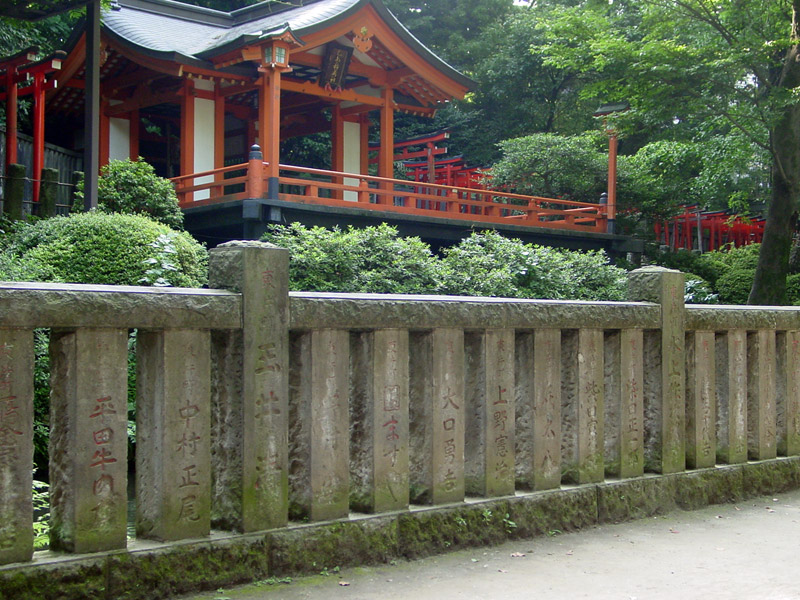| The generic
term for a fence surrounding the square or rectangular space containing
the main sanctuary *shouden
³a, of a Shinto shrine or Imperial Palace. Although the fence may sometimes
be made of stone, wood fences are the most common. The various kinds of
timber employed and the different ways of arranging the fence-boards have
given the fences descriptive names. For example an unpeeled or unstripped
timber fence is called kuroki-no-tamagaki ΨΜΚ_; a roughly finished
board fence is itatamagaki ΒΚ_; a squared timber fence is kakutamagaki
pΚ_; a vermilion fence is shutamagaki ιΚ_; a squared lattice fence
*kakugoushi tamagaki
piqΚ_; a fence made of vertically set thin strips of bamboo or wood is called
*tatehigo tamagaki
GβάΚ_; and a diagonally placed lattice fence is called sujikaigoushi tamagaki
ΨαiqΚ_. In the ancient and medieval eras roofing was not added to the
fence but from the premodern period onward, the fence became more elaborate,
and often included a roof, grilles installed between posts and wainscots.
One such example is the fence of the Worship Hall, Haiden qa, at Nikkou
Toushouguu ϊυΖ{, Tochigi prefecture. At Ise Jinguu Ι¨_{, Mie prefecture,
the sacred precinct of the inner sanctuary, Naikuu ΰ{, is enclosed by four
fences. From the outermost inward, they are itagaki Β_, sototamagaki
OΚ_, uchitamagaki ΰΚ_ and *mizugaki
_. If the mizugaki is a barrier of trees surrounding a natural area
within which a deity dwells, it may also be written βί_ or
_. |



